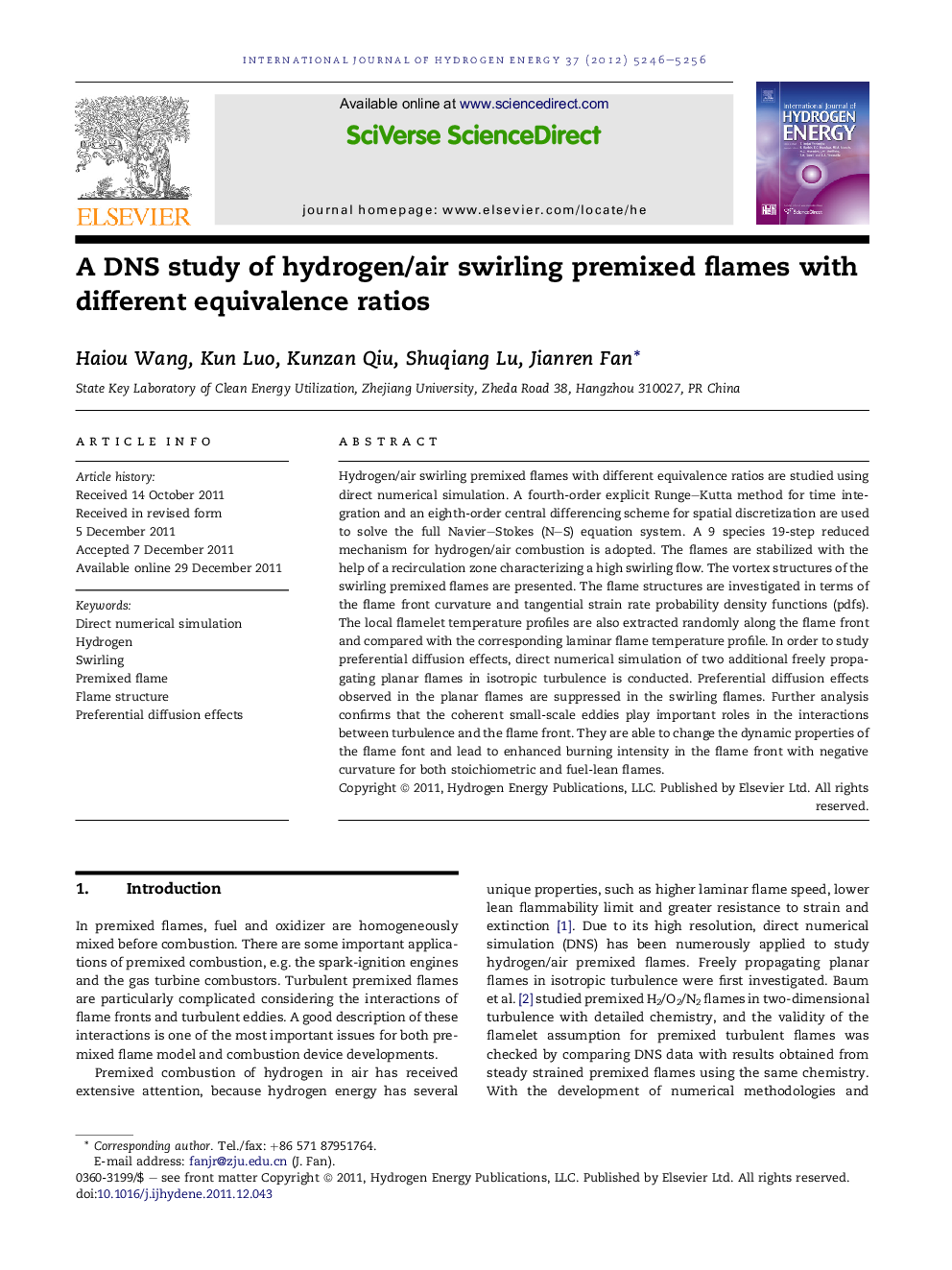| Article ID | Journal | Published Year | Pages | File Type |
|---|---|---|---|---|
| 1271545 | International Journal of Hydrogen Energy | 2012 | 11 Pages |
Hydrogen/air swirling premixed flames with different equivalence ratios are studied using direct numerical simulation. A fourth-order explicit Runge–Kutta method for time integration and an eighth-order central differencing scheme for spatial discretization are used to solve the full Navier–Stokes (N–S) equation system. A 9 species 19-step reduced mechanism for hydrogen/air combustion is adopted. The flames are stabilized with the help of a recirculation zone characterizing a high swirling flow. The vortex structures of the swirling premixed flames are presented. The flame structures are investigated in terms of the flame front curvature and tangential strain rate probability density functions (pdfs). The local flamelet temperature profiles are also extracted randomly along the flame front and compared with the corresponding laminar flame temperature profile. In order to study preferential diffusion effects, direct numerical simulation of two additional freely propagating planar flames in isotropic turbulence is conducted. Preferential diffusion effects observed in the planar flames are suppressed in the swirling flames. Further analysis confirms that the coherent small-scale eddies play important roles in the interactions between turbulence and the flame front. They are able to change the dynamic properties of the flame font and lead to enhanced burning intensity in the flame front with negative curvature for both stoichiometric and fuel-lean flames.
► Hydrogen/air swirling premixed flames are studied using DNS. ► The vortex structures of the swirling premixed flames are presented. ► The flame structures are investigated. ► DNS of freely propagating planar flames in isotropic turbulence is conducted. ► Preferential diffusion effects are suppressed in the swirling flames.
